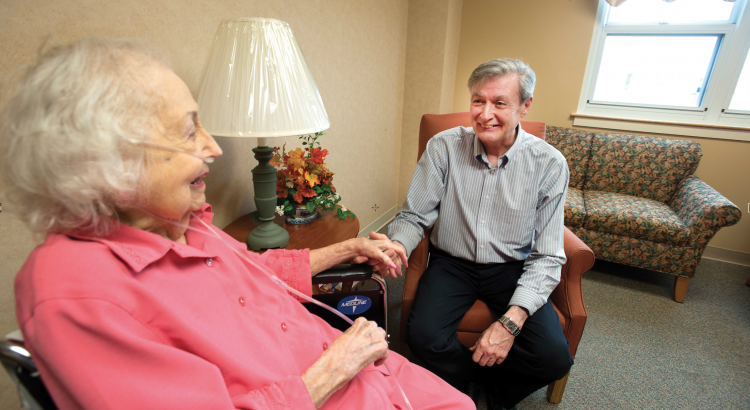
A soft voice or gentle touch reflect our desire to support patients and their families.
As hospice caregivers we realize that the key to life’s success is balance. Life is about constantly maintaining balance in health, spirituality, relationships, finances and more. However, just when we thought all was well—when we can sit and enjoy life—life’s balance is upended in the unexpected but certain storm of death and dying.
Deep inside, patients may be wondering if they made a positive difference in the world or feeling guilty about past failures. Their life plans have been interrupted and replaced with a loss of purpose.
As complicated as this seems, caring for those who are dying and their families really means that we become a compassionate fellow traveler during “the storm.” As hospice caregivers, we are certain that we cannot care for the dying and their families the same way we cared for them at other stages of their journey with illness. We must provide a plan of care that focuses on symptom management and pain control. We must also pay full attention to facilitating those relationships before, during and after death.

Our hospice team brings a sincere willingness to connect with patient and family, despite the intensity of the storm. This is particularly noticeable when we connect with the individuals involved though our tone of voice, with the words we choose, even with our muscles as we relax and aim to be fully present to do our job.These small but powerful actions reflect our authentic desire to listen, connect and help.
Chaplains, social workers, volunteers, aides and nurses bring this message when they sit bedside and make eye contact with the dying patient, listening, paying attention to the mysterious and incomprehensible decline. It is not about how much time, it really is about traveling with them in the storm, respecting and caring about a dignified death.
Professional caregivers—hospice team members—become a compassionate fellow traveler to those who are dying and their families during “the storm.”
After death, the storm continues for the family seeking to find a new balance. As fellow travelers, we offer our bereavement services as they experience the intense, internal pain due to loss and aim to express it outwardly. Consider the following life journey of one gentleman:
A 70-year-old lady with Alzheimer’s came on our service in August 2014. Her husband promised to take care of her during final days in their home, and did, until she passed away in late December that year. After 52 happy years of marriage, he realized his life would never be the same.
He came to our commemoration service a broken man, deeply grieving over the loss of his wife. On the surface he seemed to be well composed; yet underneath, he was paddling like crazy — a duck on a turbulent pond.
He joined our grief support group, faithfully attended for more than a year and fully embraced the support that was available. Two years passed and his grief became manageable.
He has become a “wounded healer” himself, touching lives by sharing his journey with people around him. He is also actively involved in the community as a volunteer.
This is one of many great stories to tell indeed, but it really sums up who we are as hospice. We are making a difference in people’s lives every day, not only while they are here with us as patients, but even long after they are gone, continually touching the lives of those left behind.




